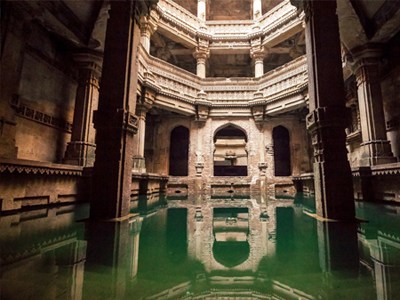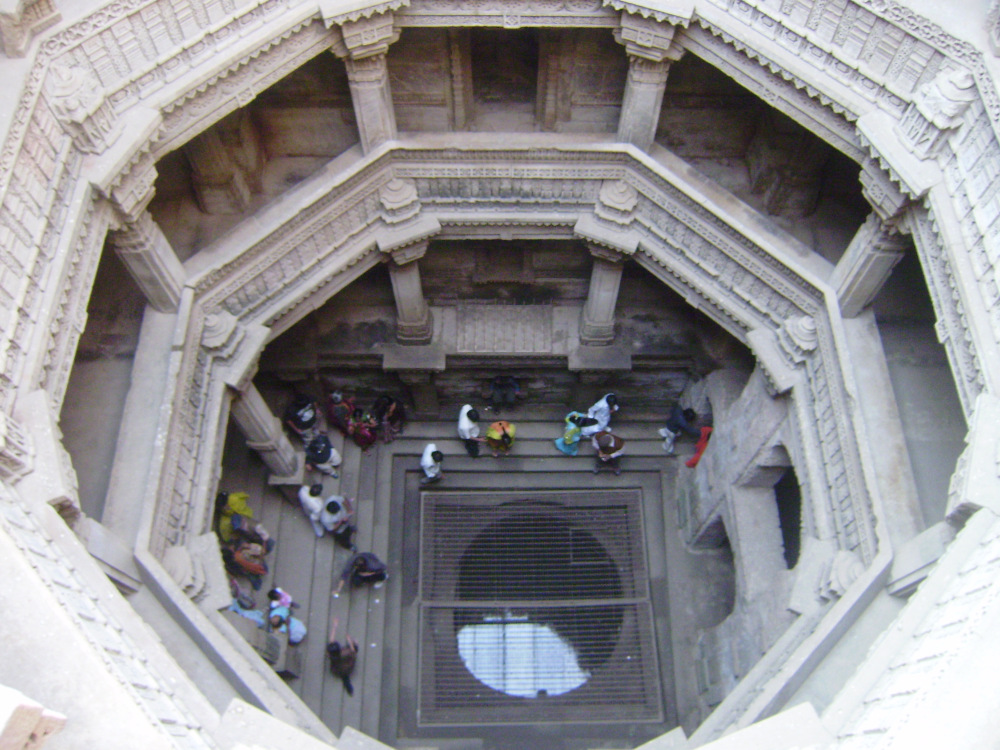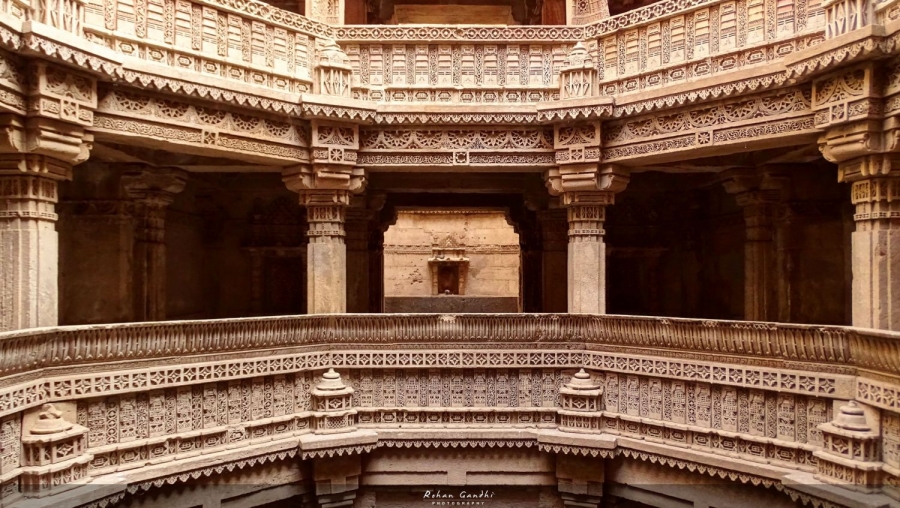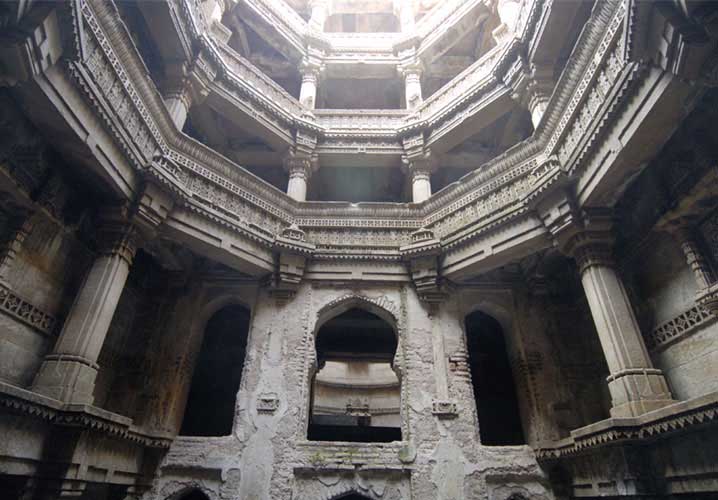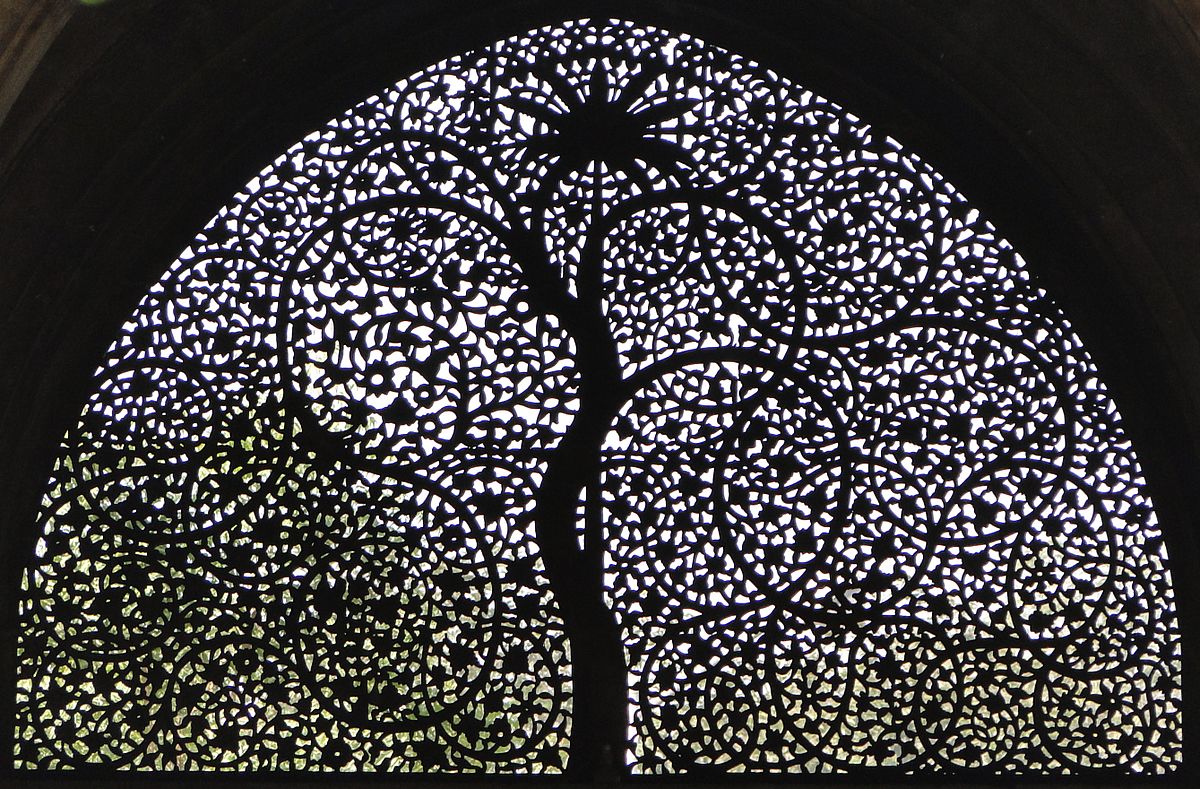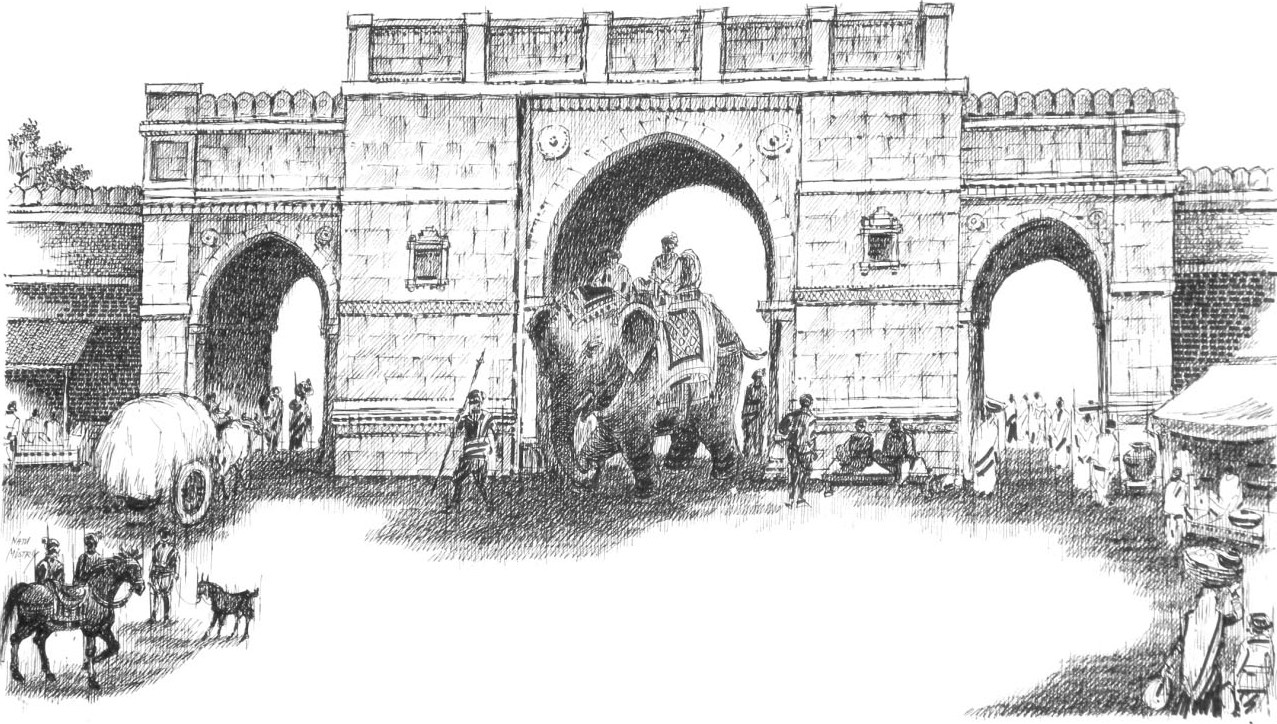Adalaj ni Vav / Adalaj Stepwell
Adalaj ni Vav or Rudabai’s Vav is a stepwell located in the village of Adalaj due to which it is known as Adalaj ni Vav. It is close to Ahmedabad city and in Gandhinagar district in the Indian state of Gujarat. It was built in 1498 by Rana Veer Singh of the Vaghela dynasty of Dandai Desh. It is an example of Indian Architecture work.
The step well or ‘Vav’, as it is called in Gujarati, is intricately carved and is five stories deep. Such step wells were once integral to the semi-arid regions of Gujarat, as they provided water for drinking, washing and bathing. These wells were also venues for colourful festivals and sacred rituals.
History
The well size recommended, based on considerations of stability, was of four to thirteen hasta (‘hasta’ a Sanskrit word, which means “forearm” of size varying from 12–24 inches (300–610 mm)), A size of eight hasta was considered ideal and a 13 hasta well was considered dangerous. However, the well thickness from top to bottom remained generally uniform. By the 11th century, the step well planning and design acquired architectural excellence and the Hindu Stepwells were standardized.
The history of the Adalaj step-well built in 1498 is established by an inscription in Sanskrit found on a marble slab positioned in a recess on the first floor, from the eastern entry to the well. Its construction was started by Rana Veer Singh of the Vaghela dynasty of Dandai Desh. But he was killed in a war, wherefater the Muslim king Mahmud Begada of a neighbouring state built it in Indo-Islamic architectural style, in 1499.
The Sanskrit inscription in the stepwell describes,
“Samvat 1555 (1498 AD), month of Magha, Mahmud Padshah being king.
” Salutation to Vinayaka (Ganesha) to whose race belonged King Mokala, chief of the country of Dandahi. From him was born Karna, whose son was Mularaja. Mahipa was Mularaja’s son, and Virsinh and Naisha were the sons of Mahipa. Virsinh’s queen, whose name is Rooda, has constructed this well.
“It is dedicated at this time — when the sun is in the north, the month is Magha, the bright half (Shukla Paksha), the 5th day, the day of the week, Wednesday, the lunar mansion — Uttara, Karana-Bava, the yoga — Siddhi.”
Then follows a glowing description of the well, after which the queen, or rather lady of the chief, is praised in a few verses; the expense is stated at 5,00,111 tankas, or over five lakhs, and the whole ends with a repetition of the date as given above.
The cultural and architectural depiction in the deep wells at various levels are a tribute to the history of step wells, built initially by Hindus and subsequently ornamented and blended with Islamic architecture during the Muslim rule.
Legend
As per legend the 15th century, Rana Veer Singh of the Vaghela dynasty, a Hindu ruler, reigned over this territory, then known as Dandai Desh. His kingdom was attacked by Mohammed Begda, the Muslim ruler of a neighboring kingdom. The Rana king was killed and his territory occupied by the invader. Rana Veer Singh’s widow, a beautiful lady known by the name Rani Roopba, though in deep grief at the death of her husband, agreed to a marriage proposal made by Mahmud Begada on the condition that he would first complete the building of the stepwell. The Muslim king who was deeply enamoured of the queen’s beauty agreed to the proposal and built the well in record time. Once the well was completed, Begda reminded the queen of her promise to marry him. instead the queen who had achieved her objective of completing the stepwell started by her husband, decided to end her life, as mark of devotion to her husband. She circumambulated the stepwell with prayers and jumped into the well, ending the saga of building the well in tragedy. These events are depicted on the walls of the well. Begda however allowed the well to remain without any defacing.
One version which is narrated in the 200 years old scriptures of Swaminarayan sect suggests that before she died, Rani Roopba requested religious saints to take bath in this stepwell so that the water in the stepwell gets purified by these saints thereby delivering her from her sins.
Another is linked to the tombs found near the well. The tombs of six masons who built the well are seen near the Vav. Begda asked the Masons if they could build another similar well and when they agreed Begda sentenced them to death instead. Begda was so impressed by the architectural excellence of the stepwell that he did not want a replica to be built.
Structure
Built in sandstone in the Solanki architectural style, the Adalaj stepwell is five stories deep. It is octagonal in plan at the top, built on intricately carved large number of pillars. Each floor is spacious enough to provide for people to congregate. It was dug deep to access ground water at that level, accounting for seasonal fluctuations in water level due to rainfall over the years. The air and light vents in the roofs at various floors and at the landing level are in the form of large openings. From the first story level, three staircases lead to the bottom water level of the well, which is considered a unique feature. Built along a North-South axis, entrance is from the South, the three staircases are from the South, West and East directions leading to the landing, which is on the northern side of the well. Four small rooms with oriel windows decorated with minutely carved brackets are provided at the landing level, at the four corners. The structural system is typically Indian style with traditional trabeat with horizontal beams and lintels. At the bottom of the well is a square stepped floor in the shape of a funnel extending to the lowest plane. This is chiseled into a circular well. Above the square floor, columns, beams, wall and arched openings spiral around; a feature that continues to the top. The top part of the well, however, is a vertical space open to the sky. The four corners of the square are strengthened with stone beams, set at 45 degrees angle.
The motifs of flowers and graphics of Islamic architecture blend very well with the symbols of Hindu and Jain gods carved at various levels of the well. The dominant carvings on the upper floors are of elephants (3 inches (76 mm) in size, each of different design). The Islamic architectural style could be attributed to the Muslim king Begda who built it. The walls are carved with women performing daily chores such as churning of buttermilk, adorning themselves, scenes of performance of dancers and musicians, and the King overlooking all these activities.
An interesting depiction carved from a single block of stone is of the Ami Khumbor (symbolic pot of the water of life) and the Kalp Vriksha (a tree of life). Also seen is a fresco of navagraha or nine planets. These depictions are said to attract villagers for worship during marriage and other ritualistic ceremonies.
The temperature inside the well is said to be about five degrees lower than the outside hot summer temperatures. This encouraged the women who came to fetch water to spend more time in the cool climes here. They stayed to worship the gods and goddesses and gossip.
A tribute paid to the rich underground structures, which are intricately decorated with sculptures, is that they are said to resemble palaces.
How to get there
By Road: Gujarat has one of the better developed road networks in India. Ahmedabad is well connected with all major cities and towns by road. Prominent bus stops are located at Gitamandir near Kalupur Railway Station and Paldi. Regular bus services are available by Gujarat state transport buses and private operators to all the major destinations of the state.
By Rail: The main railway station is located in Kalupur area. This station falls under the prominent national railway circuit and is connected to all major cities of India. If you are on the western side of the Sabarmati river, then you can go to the Gandhigram station near Ashram road to buy your railway tickets easily.
By Air: Sardar Vallabhbhai Patel airport at Ahmedabad is an international airport with direct flights to USA, UK, Singapore, Dubai and other international hubs. Numerous domestic flights are also operational from here.
Address
Adalaj ni Vav, Adalaj, Gujarat 382421

